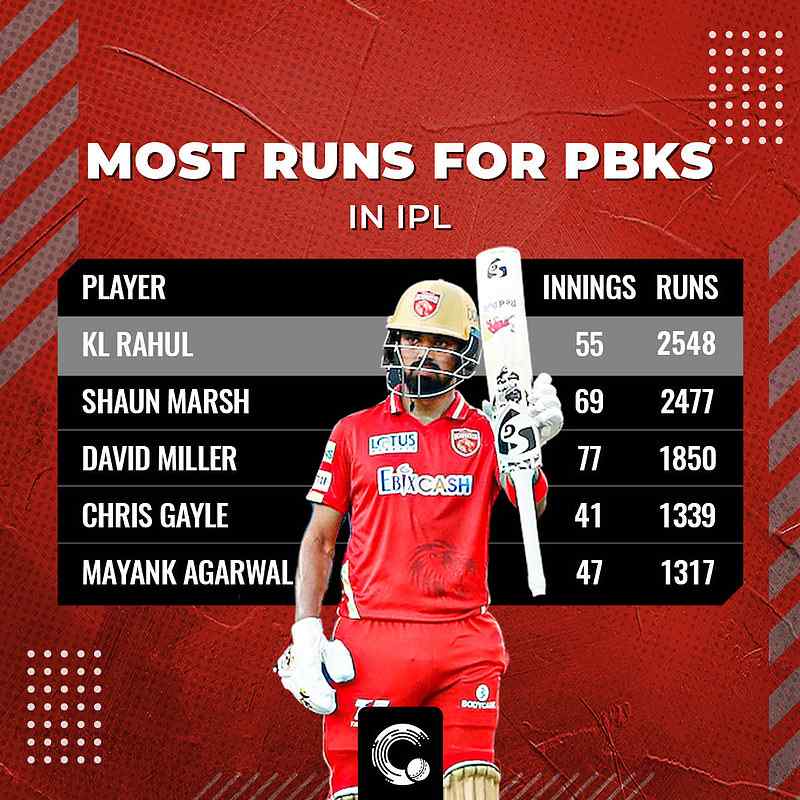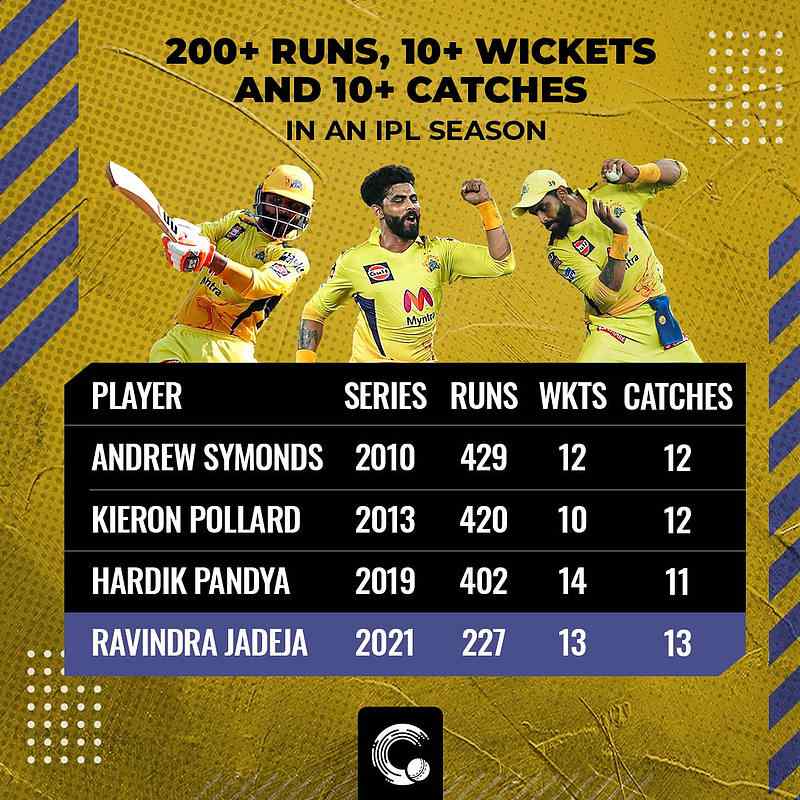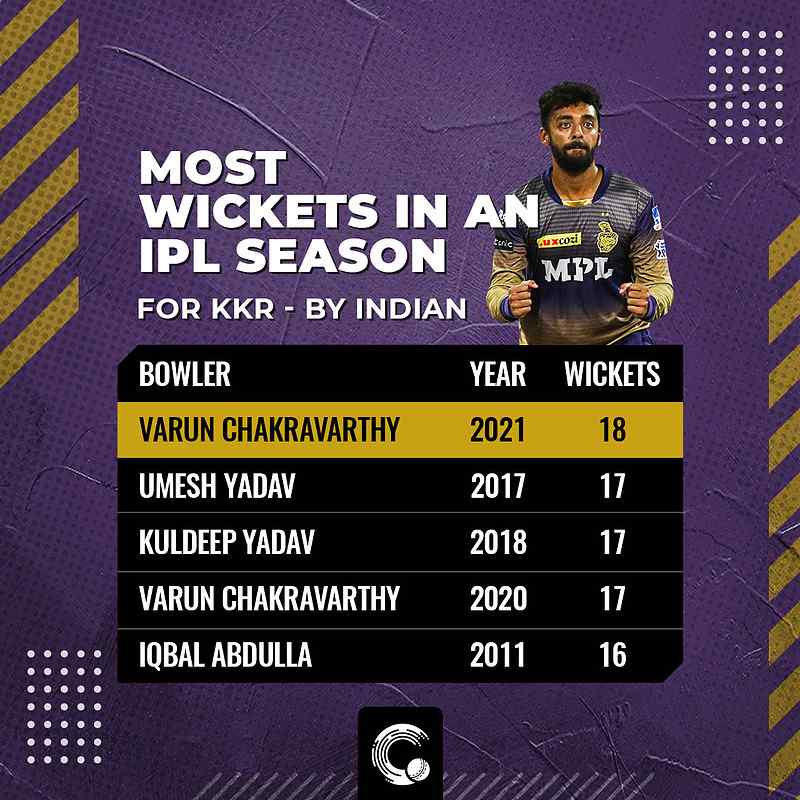News
IPL 2021 - Team of the Tournament
 OPINION
OPINIONFive of the 11 players are from the two finalists - Chennai and Kolkata
Ruturaj Gaikwad
(Innings 16 | Runs 635 | Average 45.35 | Strike Rate 136.26)
What a season Gaikwad had! The stylish right-hander ended the season as the highest run-getter in IPL 2021 and played a massive role in Chennai winning their fourth title. Gaikwad was solid in the first half, but in the second leg, he looked head and shoulders above every other opener. The 24-year-old amassed 439 runs at 62.71 in the second leg and along with Faf du Plessis, who unfortunately missed out on a spot in our XI, constantly delivered for Chennai up the order. But more than his consistency, what sets him apart was his ability to accelerate after the powerplay. In IPL 2021, in overs 7-20, Gaikwad has struck at a rate of 162.2, the second-highest amongst openers who faced more than 100 balls outside the field restrictions.
KL Rahul
(Innings 13 | Runs 626 | Average 62.6 | Strike Rate 138.8)

The Punjab Kings captain and his best friend Mayank Agarwal were at their absolute best in IPL 2021 and the two scored almost 50 percent of the franchise’s runs this season. There were questions raised over his strike rate but Rahul had no other option because of Punjab’s fragile middle-order and simply kept doing his job. The wicketkeeper-batter (30) slammed the most number of sixes in IPL 2021 and ended the season with a superb 42-ball 98* against Chennai. "I feel like I may end up letting the team down if I play the way I want to play." Rahul couldn’t play his natural game for Punjab because of the obvious reason but such won’t be the case here.
Venkatesh Iyer
(Innings 10 | Runs 370 | Average 41.11 | Strike Rate 128.47)
The 26-year-old from Madhya Pradesh didn’t play a single game in the first half but was so impressive in the second that the Indian team management has decided to keep him as a “back-up for Hardik Pandya” for the T20 World Cup. The surfaces in the UAE weren’t easy to bat but Iyer was one of the very few who managed to score freely, but he was far from reckless. He scored at least one fifty in all three venues and two of those came in the second Qualifier and the final. We could go with either Rahul or Iyer as an opener and one of them could bat at 3. Kolkata also underutilised bowling, especially in the middle overs. If used correctly, the right-arm seamer could give you at least two overs every game.
Sanju Samson
(Innings 14 | Runs 484 | Average 40.33 | Strike Rate 136.72)
The Rajasthan Royals skipper endured his best ever IPL season and was unlucky to miss out on a spot in the T20 World Cup squad. He was the only Rajasthan batter to score more than 300 runs this season and that tells you why the franchise finished second last on the points table. Samson batted with a lot more responsibility and smartly shifted from being an anchor to an explosive x-factor according to the demands of the game. The 26-year-old managed six 40-plus scores and even hammered a century against Punjab in Mumbai. Samson clobbered 12 fours and seven sixes in his 63-ball 119 and almost helped RR chase down a target of 222. The franchise will now look to build a team around him next season.
Glenn Maxwell
(Innings 14 | Runs 513 | Average 42.75 | Strike Rate 144.10)

Year after year, Maxwell returned to IPL, with the hope of recreating his 2014 magic but never materialized. Till he found a spiritual home at RCB, where he teamed up with Virat Kohli and AB de Villiers to form a lethal batting order. With Maxwell’s injection, RCB bolstered their middle-order and it also helped that they could take the advantage of attacking spinners right from the outset. Maxwell, who slammed six fifties in IPL, was the only RCB batter who looked comfortable on the UAE surfaces. Maxwell (143.6) was the only batter from the side who operated at a strike rate of more than 125 in the UAE.
Shimron Hetmyer
(Innings 13 | Runs 242 | Average 34.57 | Strike Rate 168.05)
The left-hander from the West Indies was one of the very few middle-order batters who did well this season. Amongst batsmen who faced at least 100 deliveries, Hetmyer had the best strike rate. He played a couple of match-winning cameos but his best knock (25-ball 53*) came in a losing cause against Bangalore. In the absence of Marcus Stoinis, it was Hetmyer who did the majority of the finishing work for Delhi. Ambati Rayudu also did something similar for Chennai but Hetmyer did it at a better strike rate, which propels him to our side.
Ravindra Jadeja
(Batting Innings 12 | Runs 227 | Strike Rate 145.51 | Wickets 13 | Economy 7.08)

For the last two years, Jadeja has taken over the baton from MS Dhoni and has become Chennai’s best finisher. The left-hander from Saurashtra scored the second-most number of runs (178 at a strike rate of 185.4) in death overs after de Villiers (206 at a strike rate of 221.5). We all know what he did to Harshal Patel in Mumbai, smacking the RCB seamer for 37 runs in the final over. Jadeja hit almost 30 percent of his total runs in the 20th over. On top of that, the left-arm spinner completed his full quota of overs in eight out of 16 games and also took some big wickets. Oh, he also took a couple of blinders in the field. Nothing new though!
Sunil Narine
(Innings 14 | Wickets 16 | Strike Rate 21 | Economy 6.44)
Narine was one of the biggest reasons why Kolkata managed to turn things around in the second half and made it to the final. The 33-year-old mystery spinner, who hasn’t been picked in the West Indian squad for the World T20, was mediocre in the first half - three wickets at 37.3 in four games - but wreaked havoc in the Middle East. Narine claimed 13 wickets in the UAE leg and conceded at just 6.2 runs per over. Amongst bowlers who bowled at least 20 overs in the second half, Narine had the third-best economy. He single-handedly dismantled Bangalore in the Eliminator, picking up four wickets and then smoking 29 off 15 deliveries. He was also the best bowler in the finale against Chennai. And, if needed, the left-handed batter could also be used as a floater in this team.
Harshal Patel
(Innings 15 | Wickets 32 | Strike Rate 10.5 | Economy 8.14)
Harshal isn’t new to IPL or to Royal Challengers Bangalore but even then, his performance certainly surprised everyone. At one point, there were even rumours that he would be picked in the Indian side, solely based on his IPL performance. What did he do well? He performed. He tormented batters, picked up 32 wickets, equalling an age-old record. He became the Indian player with the maximum wickets in an IPL season and in doing so, uplifted RCB’s death bowling. The other three bowlers are economical and Harshal could simply be that wicket-taker on the list. His performance could go down as one of the best seasons for a bowler in IPL history.
Jasprit Bumrah
(Innings 14 | Wickets 21 | Strike Rate 15.7 | Economy 7.45)
Barring Bumrah, nothing worked well in the bowling for the Mumbai-based side. Only Mumbai Indians player to be among the top-10 Criclytics Most Valuable Player (MVP), Bumrah was at his imperious best, and most of his success came in the death overs. The ace paceman picked up only three wickets in the powerplay but operated at an economy of less than 7.5. But, he did make an impact in the middle and death overs. Bumrah had an economy of just 7.5 in the death overs and was the only MI bowler who looked threatening in this phase. With Narine and Varun Chakravarthy in the squad, Bumrah will become even more effective.
Varun Chakravarthy
(Innings 17 | Wickets 18 | Strike Rate 22.6 | Economy 6.58)

India’s very own mystery spinner was one of the most impactful bowlers in IPL 2021. Amongst bowlers who bowled at least 40 overs in this edition, the 30-year-old had the second-best economy rate after his teammate Narine. Chakravarthy was even more impressive in the second leg, picking up 11 wickets at an economy of just 5.7 - the best amongst bowlers who bowled a minimum of 10 overs in the Middle East. Chakravarthy played 10 games in the second half and only once he leaked more than 26 runs in his fours overs, which was unfortunately in the final (0/38). There were other spinners too who were impressive but you can’t really look beyond these two KKR spinners.